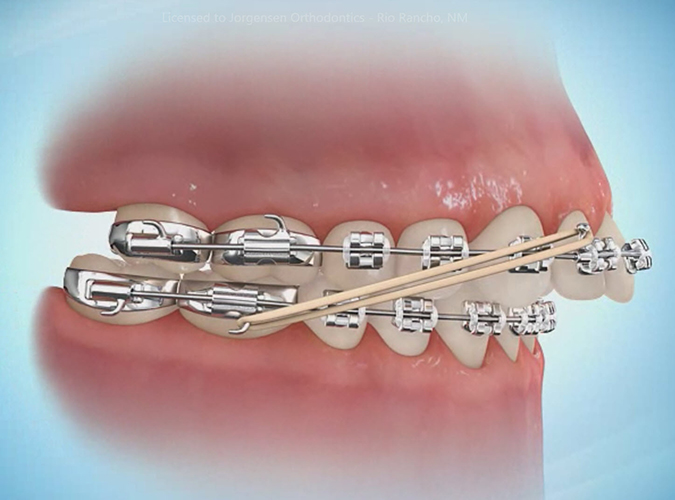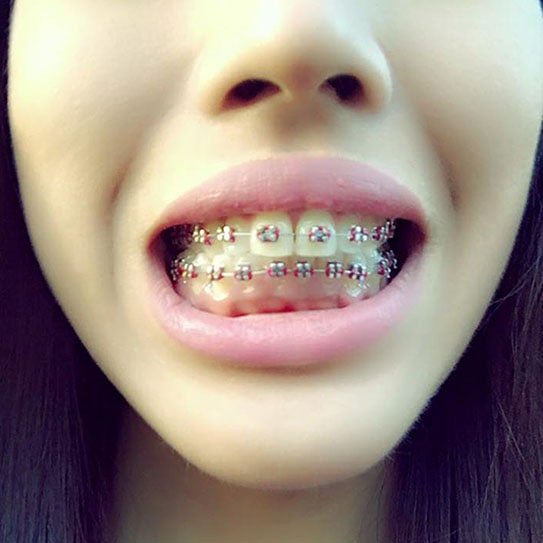The Ultimate Guide To All Star Family Orthodontics
The Ultimate Guide To All Star Family Orthodontics
Blog Article
All about All Star Family Orthodontics
Table of ContentsAll Star Family Orthodontics for DummiesA Biased View of All Star Family OrthodonticsThe 5-Second Trick For All Star Family OrthodonticsThings about All Star Family OrthodonticsExcitement About All Star Family Orthodontics

At Advanced Orthodontics, we offer patients with a all natural treatment experience. On top of that, we provide flexible treatment routines, versatile settlement choices and an enjoyable, delightful experience - old bridge aligners. Phone call ( 480) 357-4900 today for even more information and timetable a consultation.
An orthodontist is a dentist trained to diagnose, avoid, and deal with teeth and jaw irregularities. Orthodontists work with individuals of all ages, from children to adults.
Malocclusion, or misaligned teeth, can lead to oral issues, including dental caries, gum illness, and hard or agonizing chewing. Not everybody is born with straight teeth. If you have a negative bite or huge rooms between your teeth, you might wish to seek advice from a dental expert concentrating on orthodontic treatment.
6 Simple Techniques For All Star Family Orthodontics
(Photo Credit: DigitalVision/Getty Images) Orthodontists utilize repaired and removable oral tools, like dental braces, retainers, and bands, to alter the placement of teeth in your mouth. Orthodontic therapy is for dental abnormalities, including: Misaligned teethBite problems, like an overbite or an underbiteCrowded teeth or teeth that are as well much apartJaw misalignmentThe goal of orthodontic therapy is to enhance your bite.
A healthy and balanced bite guarantees you can consume, eat, and speak effectively. While you could think about orthodontists as generally for kids or teenagers who need dental braces, they can remedy oral troubles at any kind of age. Orthodontists go to university, oral school, and orthodontic institution. After college graduation, they spend 2 or 3 years in an orthodontic residency program.
All orthodontists are dental professionals, however not all dentists are orthodontists. Orthodontic residency programs supply extensive, focused guideline for oral specialists. They focus on two locations: Exactly how to effectively and safely relocate teeth Exactly how to correctly direct development in the teeth, jaw, and faceOnce an orthodontist has completed training, they have the choice to come to be board licensed - https://allstarfamilyortho.jimdosite.com/.
The Ultimate Guide To All Star Family Orthodontics
Imbalance, or malocclusion, is one of the most typical reason people see an orthodontist. It is hereditary and is the result of size distinctions between the top and reduced jaw or in between the jaw and teeth. Malocclusion leads to tooth overcrowding, a twisted jaw, or irregular bite patterns. Malocclusion is typically treated with: Your orthodontist attaches metal, ceramic, or plastic square bonds to your teeth.
If you have only small malocclusion, you might have the ability to utilize clear dental braces, called aligners, as opposed to standard dental braces. Some people need a headwear to aid relocate teeth into line with stress from outside the mouth. After braces or aligners, you'll require to put on a retainer. A retainer is a personalized device that keeps your teeth in position.

You may need to see an orthodontist if you have: Crowding or otherwise adequate room for every one of your teethOverbite, when your top teeth come your base teethUnderbite, when your bottom teeth are as well far forwardSpacing or concerns with gapsCrossbite, which is when your top teeth fit behind your base teeth when your mouth is closedOpen bite or a vertical space in between your front bottom and top teethMisplaced midline, when the facility of your bottom and upper teeth don't align Correcting an oral malocclusion can: Make biting, eating, and talking easierImprove the symmetry of our face and your general appearanceEase discomfort from temporomandibular joint conditionsDifferent your teeth and make them simpler to cleanse, assisting avoid tooth degeneration or cavities It's usually a dental practitioner that first notices misaligned teeth during a routine exam.
The Buzz on All Star Family Orthodontics
During your first orthodontic consultation, you'll likely have: An oral examPhotos taken of your face and smileDental X-raysPanoramic (360 degree) X-rays of your face and headImpressions to develop mold and mildews of your teethThese examinations will help your orthodontist know just how to wage your therapy. An orthodontist is a dental professional who's had training to treat your teeth and jaw.
Orthodontists may do surgical procedure, exams,X-rays, - invisalignand even more to aid you attain a much more comfy, healthier smile. An orthodontist is concentrated on your bite, so something like a broken tooth would be handled by a dental professional. Orthodontists are dentists yet not all dental experts are orthodontists. Orthodontists are focused on your bite, or the way your teeth fit with each other, and the straightness of your teeth.

By carefully assessing these components, the orthodontist can determine any imbalances, crowding, spacing problems, or jaw inconsistencies. When a clear photo is developed, the orthodontist will discuss individualized therapy choices.
All Star Family Orthodontics for Dummies
, orthodontists have a varied toolkit at their disposal. These important source reliable dental braces make use of a system of braces bound to the teeth and attached by cables.
Clear aligners, like Invisalign, are a preferred alternative for patients looking for a much more discreet therapy choice. These detachable trays are custom-made to considerably change the teeth's placement. Headgear may be made use of together with dental braces or aligners to apply additional targeted pressures, especially for fixing jaw discrepancies. In cases of slim jaws, palatal expanders can be used to create space for proper tooth alignment.
Report this page